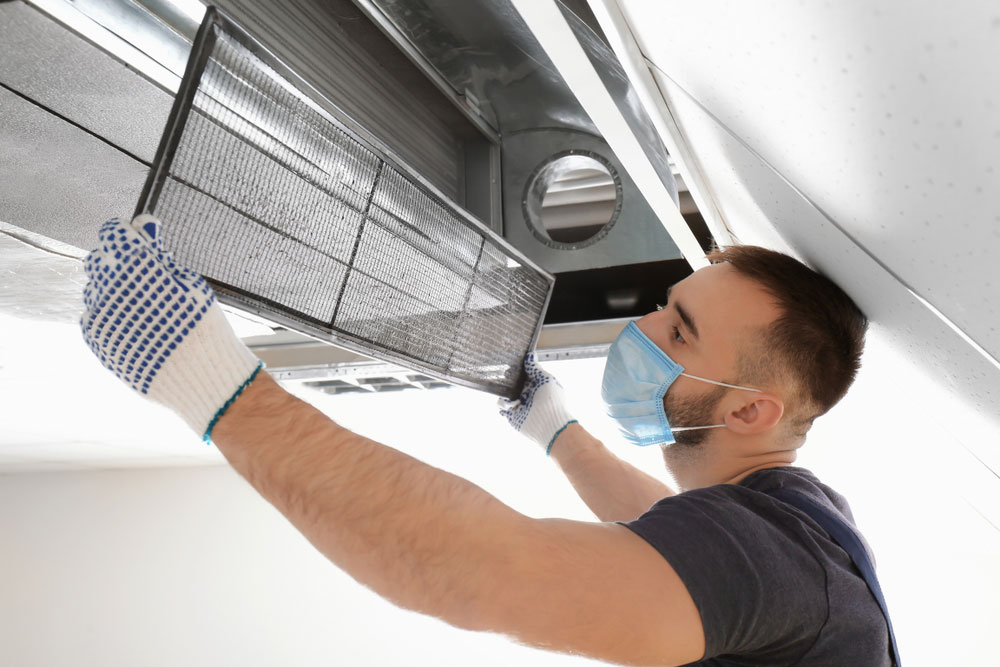If you have ever wondered how often your air ducts should be cleaned or what air duct sanitising even entails, wonder no more. This comprehensive guide will teach you everything you need to know about keeping your air ducts clean and free of harmful allergens, bacteria, and mould.
You will learn the importance of scheduling regular cleanings, the best methods for cleaning different types of ductwork, and how to tell if your ducts are in need of a deep clean.
Introduction: what are air ducts and why sanitise them
Table of Contents
What is air duct sanitising
Your home’s ductwork is responsible for circulating both heated and cooled air throughout your house. Over time, this ductwork can become contaminated with dust, mould, and other allergens. Air duct sanitising is the process of cleaning and disinfecting your home’s ductwork in order to remove these contaminants and improve the quality of the air in your home.
There are a few different ways that air duct sanitising can be accomplished. One common method is known as “negative pressure cleaning.” This method involves sealing off all of the vents in your home except for one. A large industrial vacuum is then used to suck all of the dirt and debris out of the ductwork. Once the vacuum has been turned off, all of the vents are opened up and allowed to dry completely before being sealed again.
The benefits of air duct sanitising
Air duct sanitising is a process of cleaning and disinfecting the ventilation system in your home. This includes the furnace, air conditioner, and all the ductwork that connects them. The benefits of air duct sanitising are many, but here are a few of the most important ones:
- Improved Air Quality – One of the main benefits of air duct sanitising is improved air quality. Dust, pollen, pet dander, and other allergens can build up in your ductwork over time and get circulated through your home every time you turn on your heat or air conditioning. This can aggravate allergies and respiratory conditions like asthma. Sanitising your ductwork will remove these contaminants from your home’s air supply and help you breathe easier.
- Improved Indoor Air Quality There are several different ways for indoor air quality to degrade. Your air ducts may be dirty, but your home’s HVAC system may have other problems as well. The air filter might be dirty, or a system malfunction could be circulating bad air. Call Clean Air Restoration that can help diagnose problems and repair them.
- Reduced Utility Bills The ductwork in your home is responsible for distributing the conditioned air throughout the home.
How often should you sanitise your air ducts?
Most experts agree that you should sanitise your air ducts at least once a year. Some pros even recommend doing it every three to six months, especially if you have allergies or asthma.
But how do you know if your air ducts need to be cleaned? The Environmental Protection Agency (EPA) says visible mould growth, dust buildup, and debris are all good indicators that it’s time for a cleaning.
If you have pets, smoke cigarettes, or live in an area with high pollen counts, you may need to clean your air ducts more often than the average person.
The process of air duct sanitising
Air duct sanitising is the process of cleaning and disinfecting the ventilation system in a home or office. This involves removing all the dirt, dust, and debris from the ductwork and vents, as well as any other areas where air circulates. The goal is to create a clean and healthy environment by removing contaminants from the air.
There are many benefits to air duct sanitising, including improved indoor air quality, reduced allergens, and elimination of odours. It can also help extend the life of your HVAC system by preventing build-up of dirt and debris.
The process begins with a thorough inspection of the entire ventilation system. This includes looking for any signs of mould or mildew growth, as well as assessing the condition of the ductwork and vents.
How to find a reputable company to sanitise your air ducts
If you’re concerned about the quality of the air in your home, you may be considering having your air ducts sanitised. But how do you find a reputable company to do the job?
Here are a few tips:
First, ask your friends and family if they have any recommendations. If someone you trust has had a good experience with a particular company, that’s a good place to start.
Next, do some research online. Read reviews of different companies and see what other people have to say about their experiences.
Finally, once you’ve narrowed down your choices, contact the companies and ask them questions about their services. Find out what kind of equipment they use, how long the process takes, and how much it will cost.
Conclusion
When it comes to keeping your home clean and healthy, don’t overlook the importance of air duct sanitising. This process can remove years of built-up dirt, dust, pollen and other allergens from your home’s ventilation system. Not only will this improve the air quality in your home, but it can also help to reduce energy costs by making your HVAC system run more efficiently.
Hose cleaning involves applying a disinfectant or antimicrobial agent to the surface of the hose, especially during cleaning. Applying a disinfectant kills harmful bacteria and organisms in the pipes and prevents them from spreading into the air. Most duct cleaning services use a local applicator, usually with a spray gun or other professional tools, to evenly coat the duct surface.
Not all duct cleaning companies include duct cleaning so you need to understand the benefits of duct cleaning before choosing a service. Reliable and professional duct cleaners understand that quality is essential for effectively cleaning and protecting ducts in the future. In this case, it is very important to find a professional who uses appropriate and safe cleaning equipment.
Why is air duct cleaning important and necessary?
Plumbing can be an important part of the plumbing process, especially for mold growth or pest control. In this case, cleaning the entire airway without further cleaning may encourage future regrowth or reinfection.











